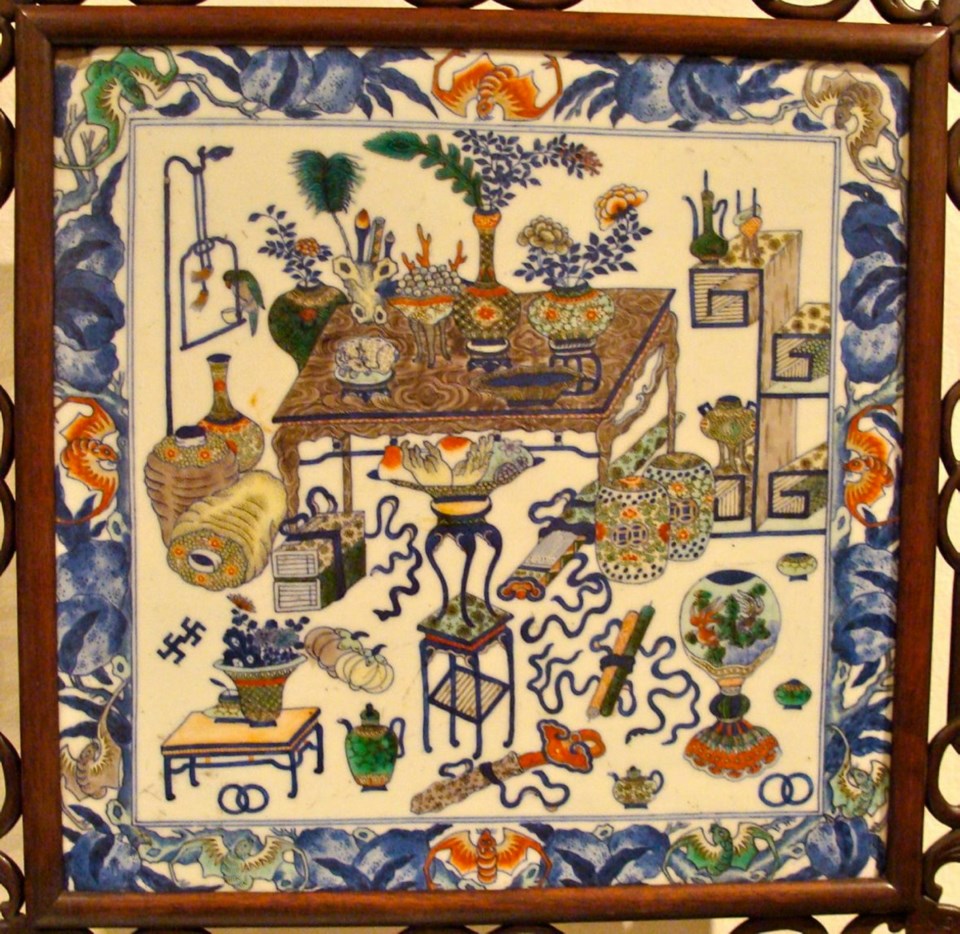 Ink and brush are at the centre of Chinese culture, and fine handwriting was key to advancement in the emperor’s civil service. Many of the scholars who held important places in the Ming dynasty were dispossessed when the Manchurian Qing dynasty took over from the native Chinese after 1644.
Ink and brush are at the centre of Chinese culture, and fine handwriting was key to advancement in the emperor’s civil service. Many of the scholars who held important places in the Ming dynasty were dispossessed when the Manchurian Qing dynasty took over from the native Chinese after 1644.
The Ming scholars fled south to live in retirement or take refuge in Buddhist monasteries. The fall of their beloved dynasty had profoundly depressed them, and they refused to collaborate with these alien invaders. So they cultivated literary pursuits — poetry, calligraphy and gazing at the moon. These were the literati.
Writing with a brush with ink was common to all literate Chinese. The ink is made by grinding a stick of dry ink on a stone. The brush is used to write on absorbent paper. Far beyond ballpoint or italic nib, this is the most expressive mark-making device that humans have devised.
The act of writing became the highest art form, more elevated than painting pictures. The text is chosen; the brush is deployed; the writer is revealed. The literati wrote poems about their lives far from the capital, and the pleasures of drunkenness.
Inevitably, the literati used brush and ink to paint symbolic landscapes, representing the virtues of distant mountains, lonely huts and the wandering poets of old. These were fantasias on the soft South Chinese landscape, created through meditation in the studio rather than observation in the field. The scholars’ writing desk was the locus of the “true” Chinese culture, in literati exile from the ruling dynasty.
The ink is pine soot formed, with a bit of glue, into a stick. With the addition of a drop of water, it is ground into 50 shades of grey on a stone slab. The brush has animal hair and comes to a supple point. Paper completes the “four treasures”: ink, brush, stone, paper. These essentials are accompanied by a wide range of accoutrements, the “treasures of the scholar’s desk.”
The gallery has just received a collection of about 40 antique stones for grinding ink. Ancient sets of ink sticks are garnished with gold leaf and moulded in evocative shapes. A collection of fine seal stones, into which signatures are carved, has been donated to the gallery.
When not in use, brushes are laid aside on a brush rest, made of stone or ceramic, in the shape of a tiny range of mountains. Errant breezes are deflected from the painting surface by small wooden screens, some with overglaze paintings set into the filigree.
Most scrolls are the vertical hanging type, and we also see examples of the horizontal “hand scroll,” meant to be unrolled on a table top for examination — and then put away. Literati art works were not intended as “interior decorating” but were enjoyed among fellow literati on special occasions.
Victoria’s collection of literati paintings is superb. One of these scrolls is the single most valuable piece in the gallery’s collection, though I won’t tell you which it is. These days, the Chinese are buying back their heritage, which was discarded in the Cultural Revolution of the 1960s, and the value of Victoria’s collection — unparalleled in sa���ʴ�ý — is astronomical.
The literati enjoyed tea while they worked. Their tea pots were often unglazed red wares in fanciful shapes from the Yixing potteries, where poets enjoyed inscribing the curiously shaped pots with their own poetry. The Victoria gallery is about to add more than 400 of these pots to its already extensive collection. Tea bowls were also venerated objects, the best being shallow porcelain dishes with a dark glaze called Temmoku, or hare’s fur.
The literati appreciation of ceramics was not limited to tea wares. This show offers an exquisite collection of the most loved glazes — ashes of rose, sang de boeuf, blanc de Chine. A special cabinet is given over to blue-and-white pottery. As the cobalt-blue underglaze was applied with a brush, and showed themes of country solitude in the good old days, this common ware holds a special place on the scholar’s desk.
Inspiration came to the literati in many forms. They prized bizarre eroded rocks, often pulled from the depths of Lake Tai, and imagined them as miniature mountain ranges. Some rocks are organic abstract sculptures, concerned with the emptiness of holes worn through the stones. In addition to three fine examples on show, the gallery is promised much larger ones when its proposed expansion is complete. And there are also paintings of rocks.
The literati seemed to live in the past. They had a passion for the ancient bronze ritual vessels, dug from funeral mounds by these proto-archeologists. The bronzes have remarkable patterns — a bit like Haida formlines — cast in the surface. Chinese metalsmiths also made “archaic”-style replicas, which were also part of the literati’s “retro” taste. Extreme examples of taste are the many opium boxes in cloisonné and the snuff bottles in all manner of semi-precious stone: jade, agate, lapis lazuli and crystal.
There is much that is familiar, and much that isn’t. You’ll find the only fly-whisk in the gallery’s collection, and a drinking cup made of rhinoceros horn. You’ll learn about the context and origin of many things you’ll find in antique shops, and you’ll see art objects of surpassing beauty. The art gallery is a treasure house, and the Asian collection is its great glory.
And the exemplary stewardship of that collection by its curator Barry Till is, as director Jon Tupper told me, its greatest treasure.



